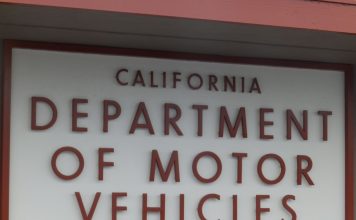Science Teacher Carries a Badge
Gilroy – Some know him as Mr. Orlando, others as officer Orlando. He is the equivalent of a full-time patrol officer – he’s got the patrol car, gun and handcuffs to prove it. He’s been through the police academy. He’s up to date with his training. There is only one difference between himself and the full-time officers: Larry Orlando works for free.
For the past 31 years Orlando has taught science at Prospect High School, and for the last 22 he has spent moonlighting as a reserve officer with the Santa Clara and Gilroy Police departments.
“It’s kind of the best of both worlds,” he said. “I went on a ride-along with my brother-in-law who is an officer in Campbell and I caught the bug. I didn’t like sitting on the passengers side. I wanted to be on the drivers side, assisting people, helping people.”
When he moved to Gilroy in the early 1980s, Orlando wanted to give something back to the city.
He spent two years earning his Reserve One ranking – the highest of the three levels a reserve can get, and the equivalent of full-time police officer.
There are six reserve officers in the GPD. They must work a minimum of 16 hours a month and are called upon for special details and during major incidents.
“We come from all walks of life and we’re looking for new blood,” Orlando said. “We’re not here to take the jobs of the regulars, we’re here because we like the job.”
Orlando doesn’t tell his students about his second life, but some figure it out anyway. Rumors get passed on from year to year … And then there’s that time he had to disarm a student holding a knife where his police training came in handy.
And working the streets has given him insight into the lives of his students by going into every type of home and seeing the different situations people face.
“It makes you appreciate life a little more,” he said. “Both jobs make me appreciate (the other.) People say teaching is stressful. I don’t find it stressful.”
Orlando likes the variety of working patrol where each day is different, every call is different.
“That’s the one thing about police work, it can happen very quickly and you don’t know what,” he said. And that’s why he insists on staying in shape.
The 54-year-old is nicknamed Buffy. One glance at his massive biceps and you are pretty sure you know where the name comes from.
“It’s a young man’s job and you never know what you’ll have to (be ready for),” he said.
Gilroy’s reserve program began in the 1940s as the police auxiliary program. During the 1970s it was renamed the reserves.
“It is no different than any other officer,” explained Sgt. John Sheedy, coordinator of the reserve program. “A reserve officer has all the same responsibilities as any other officer in the state of California.”
It takes a minimum of 664 hours to complete the police academy, not including 13 full-time weeks of field training.
During the 1960s Gilroy had about 20 reserves. That number has dwindled as requirements became more strict. Because it takes the same requirements to be hired as a reserve, many take the paid route.
According to Sheedy, a reserve officer must complete all of the same training and have something more.
“You need people who are going to understand the power they are entrusted with,” he said. “We will not take sub-standard.”
Sheedy himself was once a reserve officer.
The first time Sheedy met Orlando was at a homicide scene.
“He’s an outstanding police officer,” Sheedy said.
A poster on the wall in the police station shows two males silhouetted in the headlights of a car. The street is dark with abandoned cars and graffiti on the walls. It reads, “You wouldn’t want to go there for a million bucks. A cop does it for a lot less. A reserve does it for free.”
“I think that says it all,” Sheedy said pointing at the poster.













